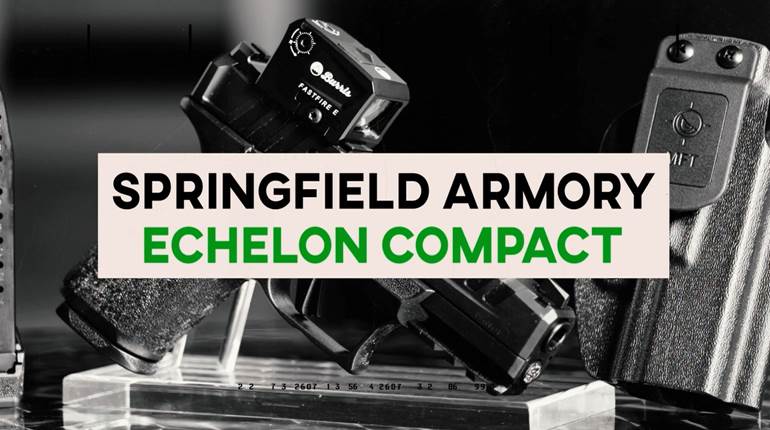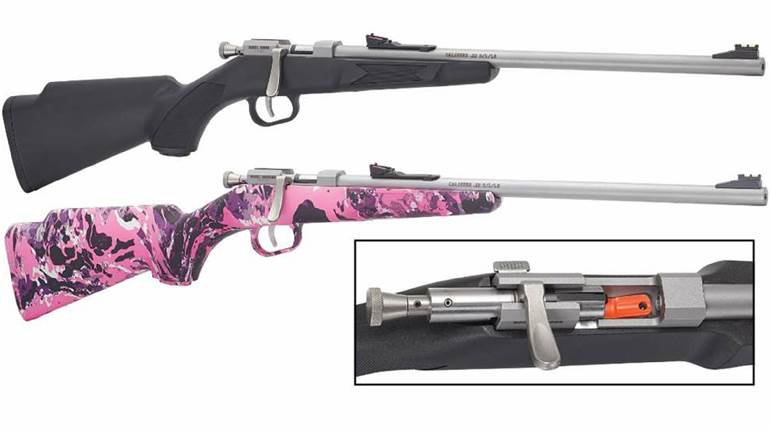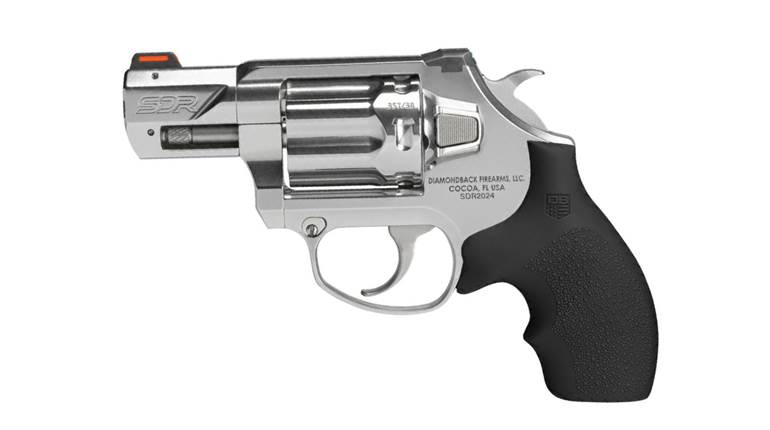
For the entirety of my career as a law enforcement officer, I carried an Smith & Wesson revolver with a 4” barrel. The only two options I had were switching to a 6” barrel or switching to a Colt. The ammunition issued was always .38 Special. This was the mindset of the Orange County Sheriff’s Department in California in the 1960s.
Times have changed. For one thing, the options have expanded to many different makers. Further, wheelguns are gone (along with geezers like me) and only self-loaders are permitted. Deputies may use pistols chambered in 9 mm, .40 S&W and .45 ACP, but if they choose to carry department-issued guns, they will be .40 S&Ws. And they will be some of the better pistols ever offered by the legendary Yankee gunmaker―Smith & Wesson Model SW99s. Although there are many service-style handguns in the thick S&W catalog, the SW99 is arguably the most advanced. Yet it was not designed on the drawing boards and in the model shops of Springfield, Mass., but by Walther in Germany.

During the time that Walther’s United States importer was Interarms of Alexandria, Va., a pistol called the Walther P99 came to the United States via that conduit. Designed for the world service handgun market, with a heavy emphasis on the needs of American police, the P99 was an exceptional pistol. In short order, experts began to view the P99 as a top choice for law enforcement use. But the hefty price kept it from achieving wide distribution.

When Interarms went out of business after the untimely death of founder Sam Cummings, Walther no longer had a U.S. importer. Eventually, it worked out an arrangement with Smith & Wesson. Through that agreement, S&W would assist in the marketing of Walther firearms in the U.S. and would actually manufacture some Walther pistols that were once made in Interarms’ U.S. plant. Further, the two legendary firms cooperated on a slightly Americanized version of the P99 called the SW99.
Originally, Walther made the P99 as a full-size holster pistol in 9 mm and .40 S&W, and that’s exactly what S&W did with the SW99 introduced in 2000. The decision-makers in Springfield also developed and marketed both 9 mm/.40 S&W compacts and a big, full-size .45 ACP variant in 2003. The manufacturing process for all members of the SW99 family is the same. The polymer frame is molded in Germany and the remainder of the Walther is machined in the United States. Original P99s are still made in Germany, but the American version is a joint manufacturing venture. That way Walther and S&W are able to offer the SW99 pistol at a more favorable price. That’s why rookie deputy sheriffs in Orange County―and other police jurisdictions―slip SW99s into their Safariland holsters when they go to work.

Although the pistol has been available for some time, it is still not as well known as it should be. With a sample of each of the three major variations of the SW99 on hand, we can get a feel for why it is the choice of shooters in many locales. At the very heart of the matter, the pistol’s ergonomics distinguish it from competing designs. There are small differences in the shape and features of the SW99 that differ from those of the P99, but they all improve the gun’s handling.
Since the trigger of the SW99 has to move through a long double-action arc that retracts a spring-loaded striker in the slide, the grip portion of the pistol has a shape that makes this motion easier. First, there is a pronounced pocket for the web of the hand. It is positioned well above an imaginary line drawn through the center of the trigger and parallel to the bore axis. This gets the shooter’s hand closer to the bore to improve control of muzzle rise in recoil. It also permits the shooter to get his hand and trigger finger in a position that is more nearly like the one used on a double-action revolver. The trigger pivots from the top of the trigger guard and describes an arc as it moves to the rear. Therefore, the higher the hand is, the greater the leverage the trigger finger will have. Second, the butt section has a profile that is shaped with a pronounced “S” curve. When the DA pull is as long as this one, the muzzle tends to dip downward as the shooter moves the trigger back. The bottom of the “S” curve comes under the base of the shooter’s thumb, close to the palm. It gives the strongest part of the hand a surface with which to resist the dipping tendency. Third, if the “S” shape doesn’t suit you, you can adjust it to fit your hand. Each 9 mm and .40 S&W service pistol comes with two spare backstraps―one thicker and one thinner―that interchange quickly.

There are some other features that make the simple act of pulling the trigger a little easier. Recessed approaches on the pistol grip at a point that matches the base of the trigger finger serve essentially the same purpose as similar cuts made on the M1911 service pistol when it became the M1911A1. There are also shallow finger grooves on the frontstrap, as well as some coarse, flat-topped checkering. That is repeated on the backstrap, where a shallow, scalloped recess on either side of the lower rear corner offers another subtle aid to a positive grip. The thick meaty part of the heel of the hand rolls into one of these and provides an improved purchase on the pistol. On the opposite side, the base of the support hand thumb (when using a two-handed grip) slips into the same recess. More gun-handling help comes from the ambidextrous paddle magazine catches at the base of the trigger guard. Finally, the SW99 comes with forward cocking serrations not found on the Walther P99’s slide.
The overall package is very appealing. In addition to the features already mentioned, SW99s have windage-adjustable rear sights and interchangeable front sights. Four different heights come with each pistol. S&W matched the color of the polymer receiver perfectly to that of the Melonite-finished steel upper. Edges and corners are radiused for comfortable carry and handling. And there is an accessory rail on the dust cover of all but the compact.
The gun has an operating system that is different from all others. We are in an era where the essence of a combat pistol is a trigger system that carries safely, but is instantly ready to go. Most commonly, the designers come up with a trigger that has the same pull for every shot. Usually, it is some form of double-action-only and it often parrots the Glock system that uses the movement of the slide to partially cock an internal striker. There are also many double-action/single-action pistols that use a lever that performs the twin functions of safety and decocker. This DA/SA operation wa pioneered by Walther before World War II in its legendary P.38 pistol and is often criticized for the awkward transition from the first-shot DA to subsequent shot SA. It is a complex matter that the SW99 complicates even further―yet at the same time simplifying.

The SW99 has three separate and distinct trigger modes. Both the striker in the slide and the trigger in the receiver may be cocked or loaded against the pressure of their respective springs. There is no manual safety to be manipulated. When the shooter loads the pistol by inserting a full magazine, then retracts and releases the slide, both the trigger and striker are cocked. Normally, the next step is to decock both, and the designers made that easy. On the top left edge of the slide, just forward of the rear sight, there is a spring-loaded bar that moves down into the body of the slide. The shooter presses this down and both trigger and striker are released from spring tension. You can now fire the pistol with a long DA trigger pull that cocks both trigger and striker. This is the first trigger mode―plain double-action.
As the shooter fires his first DA shot, the slide cycles with the recoil and cocks both trigger and striker before returning to battery and chambering a fresh round. Since both are cocked, trigger pressure is not required to cock either one. Therefore, a short crisp trigger pressure will release the striker and fire another shot. Obviously, continued repetitions will produce more shots downrange. This is the second trigger mode―pure single-action. On this one, the DA/SA transition is not terribly difficult. However, it works on the presumption that DA is better for carrying and SA is better for actual shooting. Certainly at least the latter is true―it’s far easier to deliver an accurate shot with both striker and trigger cocked. At this point, we can examine yet another way of arranging the system that partially resolves the difficulty of the long, hard, first-shot double action trigger pull.

With the pistol fully loaded (full magazine in place, round in the chamber) and both trigger and striker de-cocked, grasp the slide with an underhand grip on the forward cocking serrations. Pull the slide back a short distance-about 3/8”―and release. Now the striker is cocked but the trigger remains in the forward (decocked) position. Since the striker is now cocked, initial trigger pressure has nothing to do and the trigger pops back to the cocked position. Pressure from this position is back to the pure single action that is better for fast, accurate shooting. Here we have an unusual but nonetheless effective third trigger mode. I guess you could call it “cocked striker double-action.” Some trainers have rejected it on the grounds that when the shooter retracts the slide a short distance, he could go too far and extract a round from the chamber.
Since the first Walther P99s came into the country in the 1990s, I have had a number of productive shooting sessions with both P99s and SW99s. For this report, I went to the range with a 9 mm compact, a .40 S&W service pistol and the big .45 ACP. Once again, I was rewarded with excellent accuracy―as reported in the table above―as well as renewed appreciation for the original thought that went into the development of the system. Smith & Wesson has improved an already excellent design with better ergonomics. The SW99 is a beautifully designed pistol in both its handling and operation.
It seems to me that the rookie deputy sheriffs in that familiar green uniform are as well armed today as I was so long ago.
Smith & Wesson SW99 Specifications
Manufacturer: Smith & Wesson Inc.
Action Type: short-recoil-operated semi-automatic pistol
Frame: molded polymer, with backstrap inserts
Barrel: 3.5" (9 mm Compact), 4.125" (.40 S&W), 4.25" (.45 ACP)
Magazine: 10-round capacity (9 mm and .40 S&W); nine-round capacity (.45 ACP)
Trigger: double-action, single-action
Overall Length: 6.625" (9 mm Compact) 7.25" (.40 S&W), 7.5 (.45 ACP)
Width: 1.25" (9 mm and .40 S&W), 1.312" (.45 ACP)
Height: 4.5" (9 mm Compact), 5.312" (.40 S&W), 5.875" (.45 ACP)
Weight: 23 ozs. (9 mm Compact), 25.2 ozs. (.40 S&W), 25.6 ozs. (.45 ACP)
Finish: Melonite-treated carbon steel slide, polymer frame
















![Auto[47]](/media/121jogez/auto-47.jpg?anchor=center&mode=crop&width=770&height=430&rnd=134090788010670000&quality=60)




















